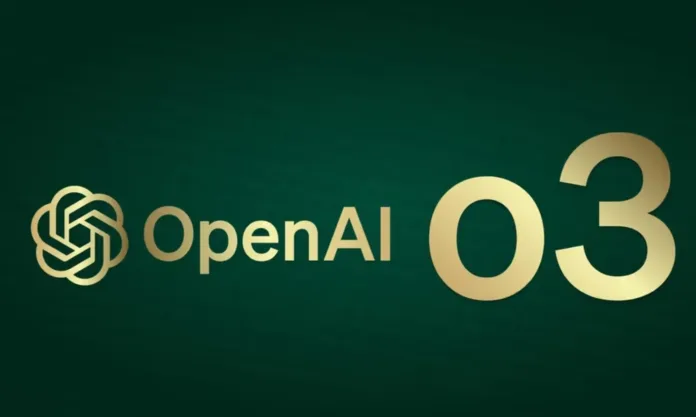The Article Tells The Story of:
- New OpenAI’s o3 model can guess a photo’s location almost like magic, even without visible landmarks.
- The model uses zooming, cropping, and deep analysis to extract tiny clues from photos.
- Watching it “think” feels like seeing a live detective show, blending science fiction with chilling reality.
- The technology raises serious privacy concerns—showing how easily your shared photos can reveal where you are.
Watching OpenAI’s o3 Guess a Photo’s Location Feels Like Living in a Sci-Fi Movie
Watching OpenAI’s o3 guess a photo’s location feels like a science fiction story coming to life. OpenAI’s new model shows how far technology has come, blending entertainment with a powerful look at AI’s abilities.
The process is simple. Take a photo, ideally without obvious landmarks. Upload it to ChatGPT using the o3 or o4-mini model, currently available through the $20/month Plus plan. Then prompt it: “Guess where this photo was taken.” The model will start working, and the results can be both thrilling and unsettling.
Read More About Our Article of OpenAI’s o3 and o4-mini Models Redefine AI Reasoning with Visual Intelligence Published on April 18, 2025 SquaredTech
How Watching o3 Guess a Photo’s Location Works
Before starting, users should turn off ChatGPT’s memory feature. Otherwise, the model might use past conversation context, making the test unfair.
One user tested it with a casual photo taken near an outdoor bar in El Granada, California. The image included a road, a house, and some hills—nothing special or easily recognizable.
At first, OpenAI’s o3 made a strange mistake. It claimed it could not see the photo and would instead rely on metadata. It noted the image size but insisted it could not visually analyze it. Moments later, the model switched tactics and began using its vision tools properly.
o3 described the scene. It saw a residential neighborhood, a light green house with a picket fence, a fire pit, and coastal features like olive trees and California poppies. The model suggested the photo could have been taken in a coastal California town like Cambria or Morro Bay. It even noticed pastel houses and hills typical of the Central Coast.
The experience turned even more surreal when o3 decided to zoom in on a license plate for more clues. It ran Python code, cropped the image around the suspected plate area, and analyzed the details. It recognized the plate’s white background and red characters typical of California plates.
o3 continued zooming, cropping, and thinking through the details for nearly seven minutes. It narrowed down the possibilities based on architecture, vegetation, and geographic clues.
In the end, the model guessed Cambria, California. It added that if it were wrong, El Granada would be its next guess. While the exact guess was about 200 miles off, the backup guess—El Granada—was exactly right.
Watching o3 Guess a Photo’s Location Shows AI’s Strange New Powers
The result felt surreal. Watching o3 guess a photo’s location using small clues highlighted how capable modern AI has become.
Importantly, it appears that o3 did not cheat by reading hidden photo metadata. If it had, it would have directly guessed the correct town without mentioning Cambria first. Other users have tested this by removing all metadata through screenshots and saw similar results.
However, some users reported that in rare cases, o3 did use EXIF metadata to guess locations. These cases were visible during the model’s thought process, where tools like ExifTags were mentioned. Still, most examples suggest that o3’s visual reasoning abilities work independently from hidden photo data.
Other AI models can also guess photo locations. Claude 3.5 and 3.7 Sonnet showed impressive results, although without o3’s detailed zooming feature. Gemini, another AI model, struggled. It incorrectly used user location data or made wrong guesses when tested on the same photos.
What makes o3 different is how it integrates tool usage into its thinking process. It chains small steps—cropping, zooming, analyzing, revisiting—and builds conclusions through active exploration of the photo. This method feels more like watching a human investigator at work rather than a simple machine guess.
Why Watching o3 Guess a Photo’s Location Feels Exciting—and Alarming
Watching o3 guess a photo’s location is fun. It feels like stepping inside a futuristic detective show. The way the model pans through images, discusses theories, and checks its own thinking is wildly entertaining.
But there’s also a dark side. The technology shows how easy it is to identify locations from random, seemingly harmless photos. Even a bland photo can give away enough information to track where it was taken.
This power has real-world safety concerns. People who worry about privacy or personal safety need to understand how easily AI can analyze shared images. Stripping metadata might not be enough to hide where a photo was taken.
Moreover, the tool is available to almost anyone who subscribes to the service. While public access means more people can see AI’s true capabilities, it also increases the risks. People must know that AI’s image analysis tools are powerful, fast, and increasingly accurate.
Later updates showed that o3 does have some rough awareness of the user’s general location. This feature likely supports its improved search abilities. Even so, experiments showed that the model could guess photos taken far away from the user’s actual location. It successfully analyzed photos from Madagascar and Buenos Aires without any help from metadata.
This shows that watching o3 guess a photo’s location depends more on its vision model and thinking abilities than any simple trick.
Final Thoughts: Watching o3 Guess a Photo’s Location is a Sign of AI’s Future
Watching o3 guess a photo’s location is more than just a neat trick. It offers a glimpse into the future of AI. Models that can see, think, and act in a step-by-step chain are becoming stronger and more human-like in how they reason.
This could change many areas—search, investigation, even entertainment. It also demands that users stay alert about what sharing a photo might mean today. AI’s abilities are growing faster than many expect, and seeing them work in real-time is a sharp reminder of that fact.
As other companies race to match o3’s thinking patterns, this kind of technology will soon become even more common. Watching o3 guess a photo’s location is just the start.
Stay Updated: Artificial Intelligence


